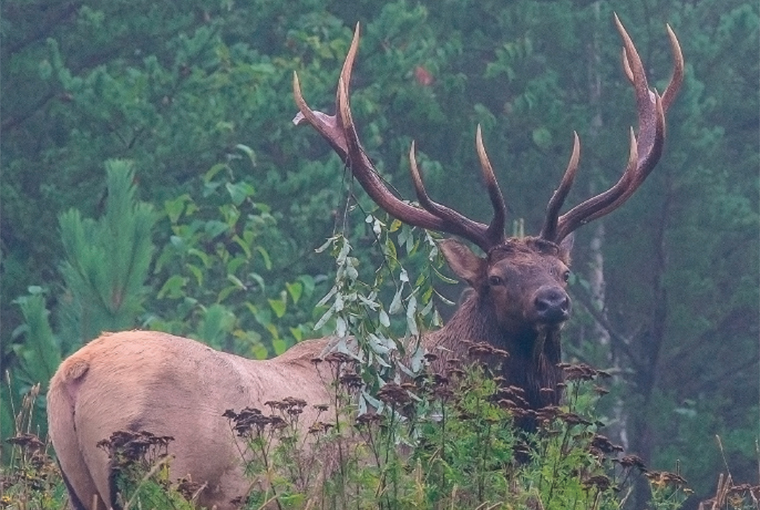
Antlers fascinate hunters and have since time immemorial. Antlers of huge stags have adorned the walls of medieval castles and European hunting lodges for centuries. The late Dr. Tony Bubenik noted the evolution of antlers could be traced back about 40 million years. Antlers are commonly called racks. They can also be called bones or crowns, and some refer to them as horns, though they aren’t the same thing.
Today, antlers are found only on deer. There are many kinds of deer around the world, all of which are in the family Cervidae. Examples include fallow, axis, and a group called the muntjacs.
Antler vs horn
Ontario has four species: the white-tailed deer, moose, elk, and caribou. All are native, though the elk was extirpated in the 1800s, and has since been re-introduced. Like deer everywhere, Ontario deer grow antlers. Over the centuries, humans have introduced deer in many areas where they did not previously exist. Deer taste good and can be trophies to hunters, so as people moved around the world, they brought their favourite deer with them.
Antlers are grown — and shed — on an annual basis. Unlike antlers, horns are permanent structures that aren’t shed, ever. They occur in a large group of animals in a variety of shapes, sizes, and forms. Typically, horns don’t show any branching. Commonly, both males and females grow horns, whereas with antlers, they are usually only grown by males, with female caribou the exception. Sheep, goats, antelope, bison, and domestic cattle collectively known as Bovoids, all have horns. Other groups of animals, like rhinos and giraffes, also grow horns.
Fast-growing appendages
During the growth phase, antlers are one of the fastest-growing cellular structures in the animal kingdom. New growth can often be seen on a daily basis. Antlers grow from knobby protuberances on the skull called pedicles, normally one on each side of the head.
Growing antlers have a skin covering called velvet, which is extremely sensitive. On moose and caribou, there can be vivid stripes of colour in the velvet, called “marbling.” In velvet, antlers are warm to the touch, as they are highly vascularized (full of blood vessels) and, if damaged, can bleed profusely. The end of the antler growing period is a time of mineralizing and hardening of the spongy antler.
Once the velvet is gone, what’s left is bone.
What a rack!
In general, healthy, mature male deer have the largest antlers. Antlers are often described as palmated (moose) or cervicorn (elk, whitetails, and caribou). Cervicorn antlers have an obvious main beam with points.
One of the largest racks ever was found on an extinct Irish elk, an animal that ranged across Eurasia. The elk was about 2.1 metres (6.9 feet) tall at the shoulders, a little taller than a big bull moose. Some Irish elk had crowns that measure over 3.6 metres (12 feet) from tip to tip and weigh up to 40 kilograms (88 lb). The species went extinct less than 8,000 years ago coincident with a die-off of many deer species, for which climate change is thought to have been a major factor. A number of moose ancestors were extinguished at that time, some of which had racks more than eight feet across. No moose today has a rack like that.
Ontario antlers
The moose, elk, and caribou that roam parts of Ontario today might not have the massive bones of their ancestors, but modern deer racks can be pretty darn impressive. An Ontario moose can grow wide, palmated racks with a spread of over four feet that weigh more than 40 pounds.
The main beam of homegrown elk and caribou antlers can also exceed four feet with many long, sprouting points. Big buck whitetails, with antlers that look like a tree, occur across much of the southern half of the province.
Typical versus non-typical
Hunters generally classify deer antlers as “typical” and “non-typical” or “atypical”. Each deer species has antler characteristics that are unique. One characteristic of all typical antlers, regardless of the species, is the similarity of the right and left antler; they are virtual mirror images of one another. Non-typical antlers are usually paired and can appear to be symmetrical, but have at least some points that differ with respect to number and placement on the main beam.
Very large non-typicals can look quite bizarre, with lots of points, bumps, and burrs, with great mass. Many antlers are ‘in-between’, in that they are mostly typical but have one or more non-typical points. Older cervids tend to have bigger antlers than younger animals, and they are more likely to be non-typical though a very old animal often grows antlers that are substantially smaller than those of its prime. Genetics, habitat quality, and other factors, including weather and injuries, can influence antler growth.

Originally published in the Jan.-Feb. 2019 issue of Ontario OUT of DOORS magazine


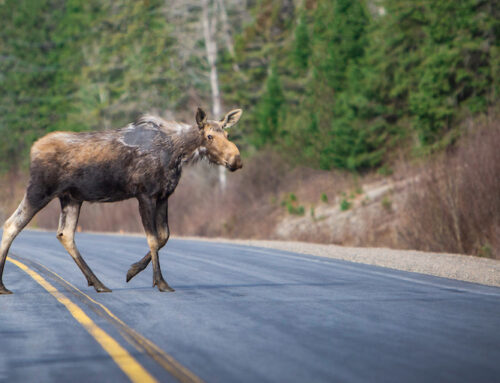
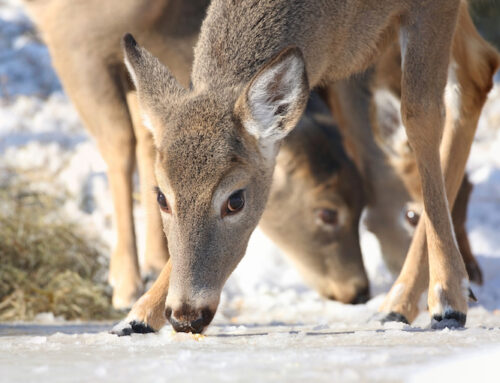
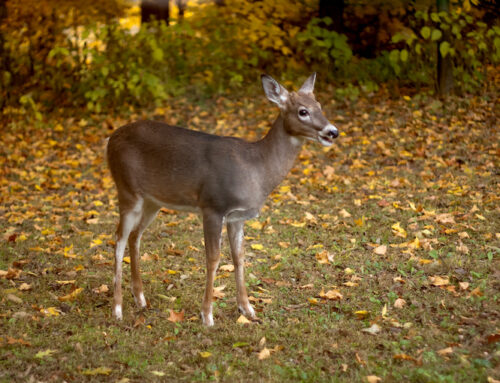
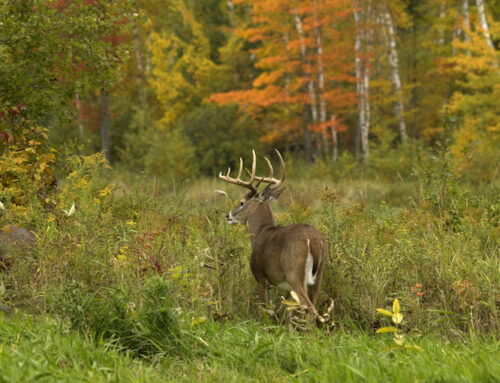
Thank for a most informative articleon Antlers.
I have use antlers in my work. I love the beauty and majesty of the animals. The antlers convey their strength . Thank you very much.
Thank you, Jesse.